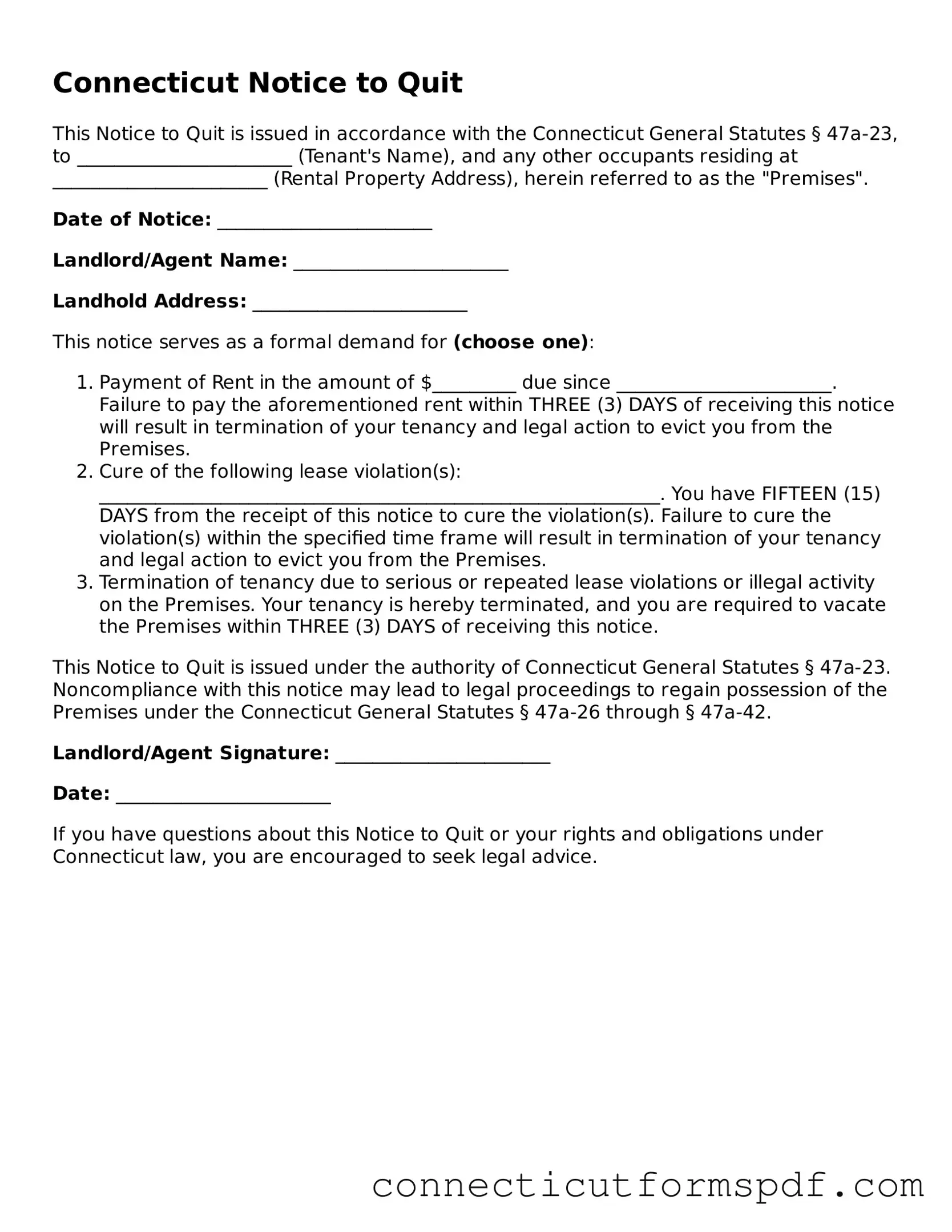Connecticut Notice to Quit
This Notice to Quit is issued in accordance with the Connecticut General Statutes § 47a-23, to _______________________ (Tenant's Name), and any other occupants residing at _______________________ (Rental Property Address), herein referred to as the "Premises".
Date of Notice: _______________________
Landlord/Agent Name: _______________________
Landhold Address: _______________________
This notice serves as a formal demand for (choose one):
- Payment of Rent in the amount of $_________ due since _______________________. Failure to pay the aforementioned rent within THREE (3) DAYS of receiving this notice will result in termination of your tenancy and legal action to evict you from the Premises.
- Cure of the following lease violation(s): ____________________________________________________________. You have FIFTEEN (15) DAYS from the receipt of this notice to cure the violation(s). Failure to cure the violation(s) within the specified time frame will result in termination of your tenancy and legal action to evict you from the Premises.
- Termination of tenancy due to serious or repeated lease violations or illegal activity on the Premises. Your tenancy is hereby terminated, and you are required to vacate the Premises within THREE (3) DAYS of receiving this notice.
This Notice to Quit is issued under the authority of Connecticut General Statutes § 47a-23. Noncompliance with this notice may lead to legal proceedings to regain possession of the Premises under the Connecticut General Statutes § 47a-26 through § 47a-42.
Landlord/Agent Signature: _______________________
Date: _______________________
If you have questions about this Notice to Quit or your rights and obligations under Connecticut law, you are encouraged to seek legal advice.
